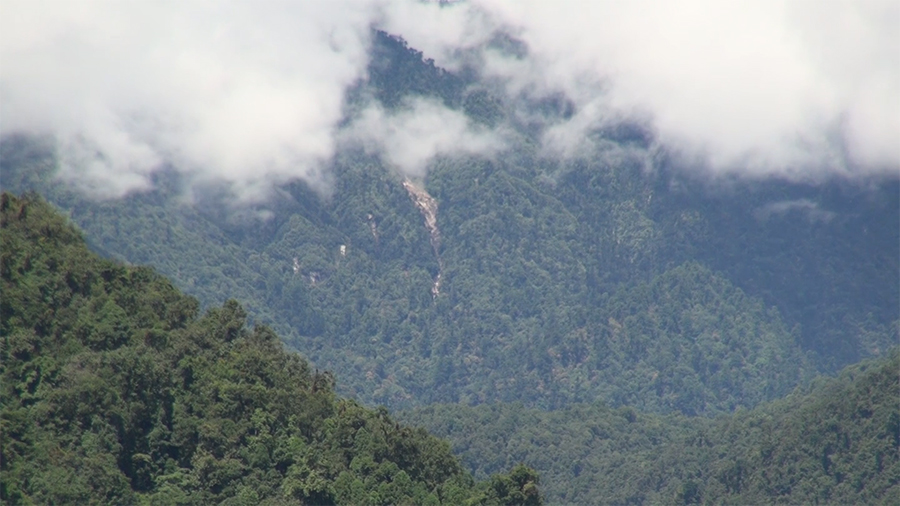
Seeking answers to the Oong-gar flash flood tragedy in Lhuentse, a team of officials from the Druk Green Power Corporation and Druk Hydro Energy Limited, supported by the Oong-gar community, conducted a physical assessment of the upper catchment of Newanchhu. Despite a week of assessment, the exact reasons behind the flash flood remain an unsolved puzzle. They could not ascertain the exact cause. The Oong-gar village was hit by a devastating flash flood from the Newanchu stream washing away 23 lives including the base camps.
The physical assessment found two major slides near Rodongla and a nearby sub-catchment along with seven minor slides in the area. The Newanchhu stream flows from Rodongla in the Bumthang district and is joined by smaller streams.
 Additionally, the assessment revealed erosion along the entire catchment area, including the top, every drainage and tributary. The banks of the streams were also eroded.
Additionally, the assessment revealed erosion along the entire catchment area, including the top, every drainage and tributary. The banks of the streams were also eroded.
There are two streams in the area: Yungghichu and Newanchu. They come together near Oong-gar village and form the Yunggichu river, which will be utilised to generate 32-megawatt hydro energy.
The flashflood originated from the Newanchu stream, which is fed by a small tributary. During the monsoon, the stream swells.
According to some residents, the ongoing construction near the bridge might have disturbed their local deity leading to the tragedy while some suspect construction activities as a possible cause.
“I am 65 years old and this is the first time I have experienced such a disaster. My parents have never mentioned such an event happening before. We believe in a local deity named Wontong, who resides near the bridge. I think that due to ongoing construction, we might not have been able to make proper offerings to the deity and this could have caused the disaster,” said Dorjila, a resident.
“The stream used to get bigger during every monsoon, but never like what we witnessed this time. This time, the stream swelled to an unprecedented level and we had to leave our house as it trembled. We were scared. I believe that the ongoing construction activities including blasting might have led to the disaster, which happened for the first time,” said Youden, another resident.
Meanwhile, according to the National Center for Hydrology and Meteorology, flash floods in mountainous regions in the Himalayan region are common phenomena during the monsoon.
Heavy rainfall saturates the soil, triggering landslides that block the main streams with debris, forming artificial lakes. As these lakes breach and release the floods downstream, they can trigger further landslides along the riverbanks, aggravating devastation.
The NCHM added that like any other flash flood, the Oong-gar flash flood might have happened due to the same phenomenon as a result of antecedent rainfall on 20th July as scars of landslides are reported in the watershed.
Furthermore, the NCHM emphasised the need for a comprehensive technical study to ascertain the cause of the flash flood.
Meanwhile, the search and rescue team are continuing their efforts to locate the 15 missing individuals.
To pay tribute to the departed souls, the Lhuentse district and DGPC organised a Gensig at the flood site, led by Lam Neten and monks from the Lhuentse Dratshang.
Sonam Darjay, Lhuentse
Edited by Sonam Pem


